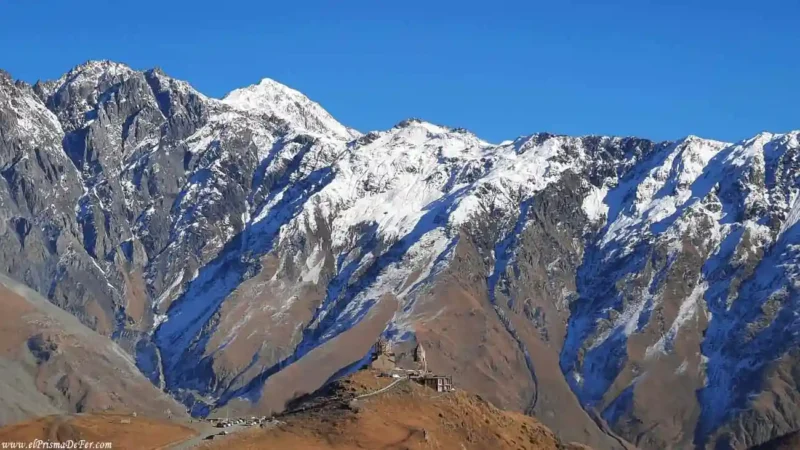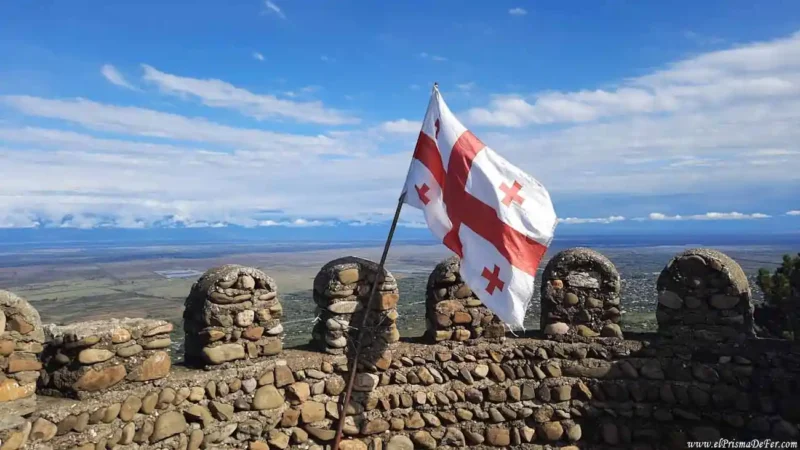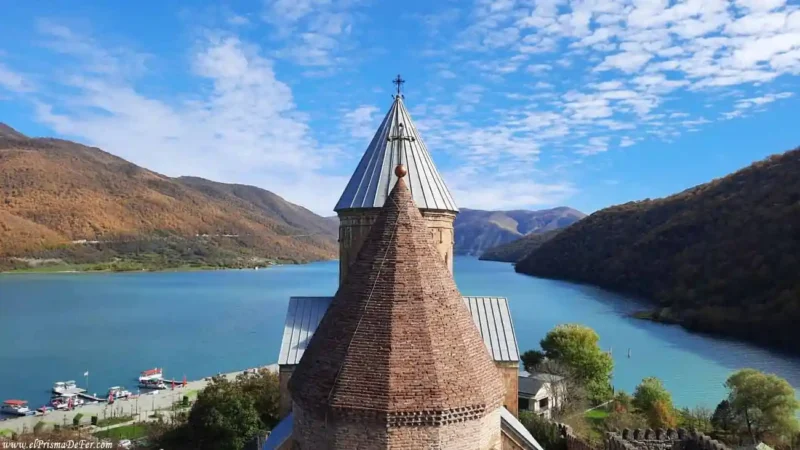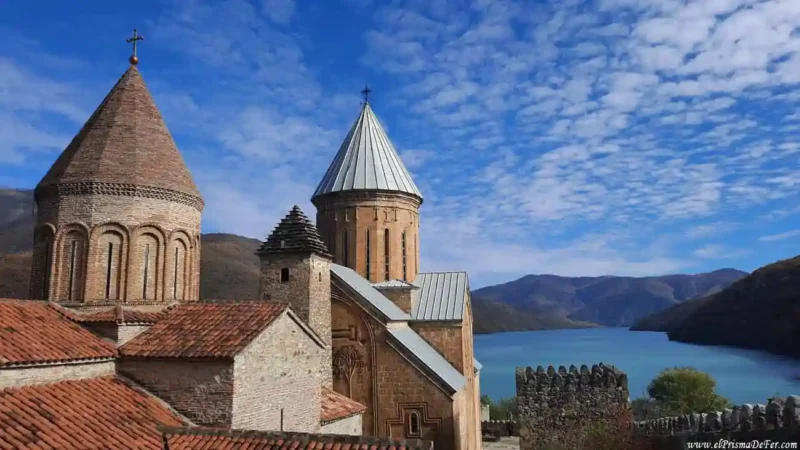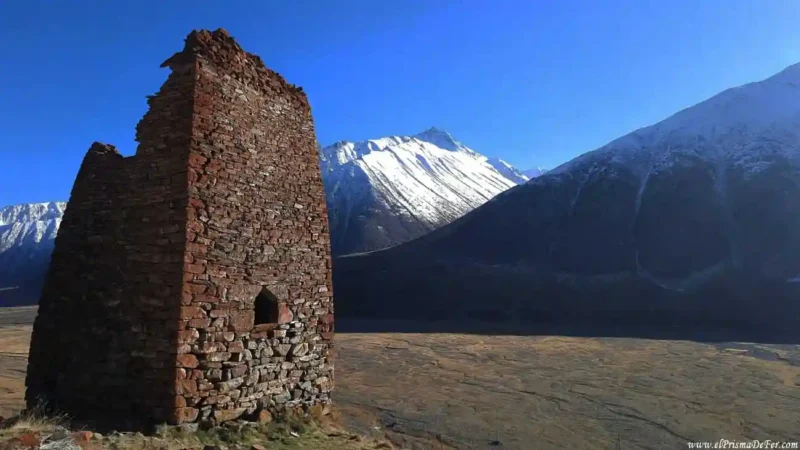The Juta Valley is located at an altitude of approximately 2,200 meters, just over 20 kilometers from Stepantsminda (Kazbegi). It is one of the highest inhabited valleys in Georgia, surrounded by the Chaukhi Mountains, also known as the "Dolomite Caucasus" for its sharp peaks, which rise to over 3,000 meters.
The village of Juta is the starting point for various hikes, from simple treks to multi-day routes that connect to the Khevsureti region.
In this article, I'll tell you what trekking in the Juta Valley is like, what you can see along the way, how long the hike to Chaukhi Lake takes, continuing on to the mountain pass, and also my personal experience comparing it with other valleys in the region, such as Truso.
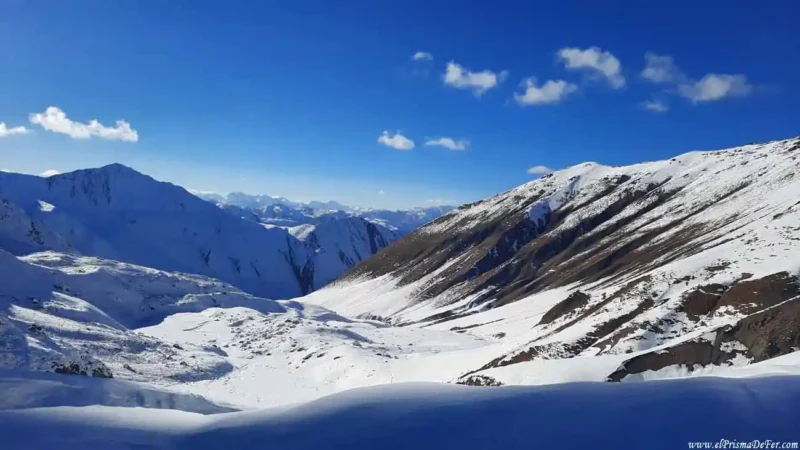

Table of Contents
🗺️ Trekking in the Juta Valley Fact Sheet
| Start |
| Juta |
| Final |
| Juta |
| Duration |
| 1 day |
| Distance |
| 16 km |
| Estimated time in hours |
| 7/8 hs |
| Max. Altitude |
| 3300m |
| Difficulty |
| Easy-Moderate |
| Signaling |
| Marked and well-signposted trail |
| Water/food |
| In the village of Juta you can get provisions |
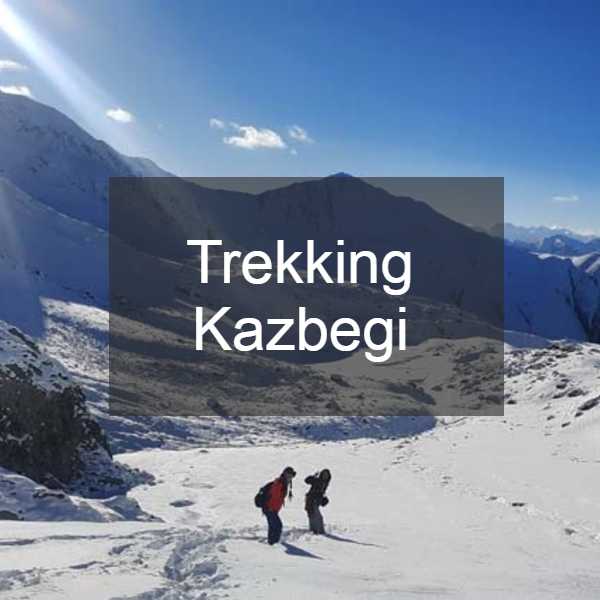
Do you want to follow my routes precisely?
Download the KML/KMZ files of all the treks I did in Kazbegi, including the Gergeti Glacier, Juta Valley, Truso Valley, and Arsha Waterfall, and open them in apps like Maps.me or Gaia GPS to get the complete route offline. This is ideal if you want to navigate the valley with confidence, even without a signal.
Get the Kazbegi files on Gumroad for a small contribution.
How to get to Juta Valley from Kazbegi
The Juta Valley is located about 20 km from Stepantsminda (Kazbegi), and access is not as direct as to other valleys in the area. There is no regular public transport to Juta from the village center, so consider these alternatives:
- Local taxi: This is the easiest and fastest option. The journey takes about 30-40 minutes, depending on the road conditions, as the last few kilometers are gravel. It's a good idea to agree on a round-trip fare with the driver, or ask to be waited for and return the same day.
- Organized excursions: Some agencies in Kazbegi offer transfers to the Juta Valley, sometimes combining the visit with other nearby points of interest.
- Hitchhiking: This is a possible alternative, although less safe and slower. During peak season, there are often cars traveling up to the valley, mainly jeeps carrying tourists.
- Own or rented vehicle: If you have a car, you can arrive directly, although keep in mind that the last stretch requires careful driving, especially if you don't have experience on mountain roads.
I went with my travel companions, whom I met during the trekking from Mestia to Ushguli, in the car they rented in Tbilisi. However, we couldn't get to the village, since the road was under repair (it seems like it's been for years), and we were forced to leave the car a few kilometers before.
From there, you had to walk or take one of the taxis waiting in the area to take you to the town and the official start of the route.
How long does the trekking in the Juta Valley last?
The classic trek from Juta village to Chaukhi Lake is relatively short, taking between 2 and 3 hours round trip, depending on your pace and any stops along the way. The trail doesn't present any major technical difficulties, although in some sections the slope is noticeable and the terrain can be somewhat uneven.
If instead you decide to continue beyond the lake to the Chaukhi Pass, the walk becomes considerably more demanding. The total round trip from Juta takes about 7 to 8 hours, with a significant ascent and greater mountain exposure.
This route allows you to cross the pass and look out over the Khevsureti region. It is an ideal option for those looking for a more comprehensive trek, although it requires good physical fitness and an early departure.

What to see on the way to the village of Juta
The journey to the village of Juta doesn't offer many points of interest, aside from a few small villages you pass by. The main and most notable stop is the village of Sno, where you can see giant face sculptures and a small castle with the typical Svana tower.
The trail to Juta crosses mountains, rivers, and valleys, and depending on the time of year, there may be snow or mud, making the route more challenging.
Where the trekking in the Juta Valley begins
The Juta Valley trek begins in the village of Juta, a small mountain hamlet located at the end of the road. From there, the trail continues past the village and, after a steep climb, reaches the Five Seasons Hotel, an alpine-style accommodation that is usually the clearest reference point for locating the path.
The Five Seasons Hotel is the most prominent accommodation in the Juta Valley and virtually the only one in this remote mountainous area. It is a small complex of cottages and a main building with a restaurant. It is popular with hikers and travelers looking to spend the night surrounded by nature, with unobstructed views of the Chaukhi Mountains.
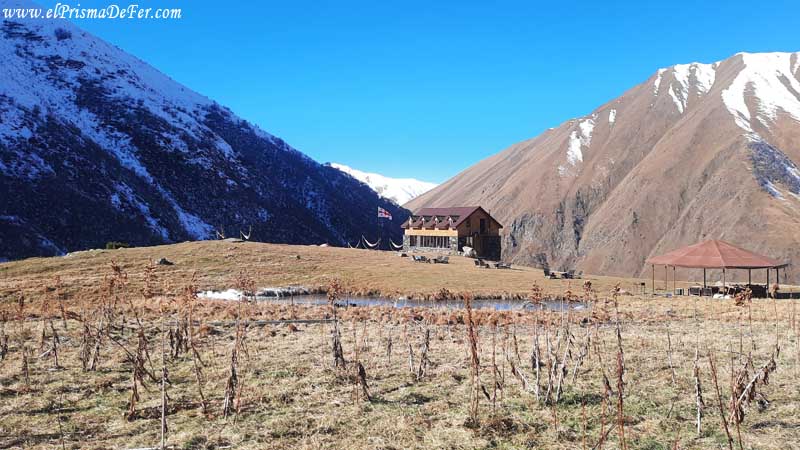
Although prices tend to be higher than in Kazbegi, its privileged location makes it a popular choice for both trekkers and those simply looking to relax in this unique setting.

What is the trekking to Chaukhi mountain pass in Juta like?
The hike begins with a gentle ascent along the side of a meltwater river and through some meadows. We were careful; in late October, this part of the trail was partially covered in snow, making it slower and slippery in several sections.
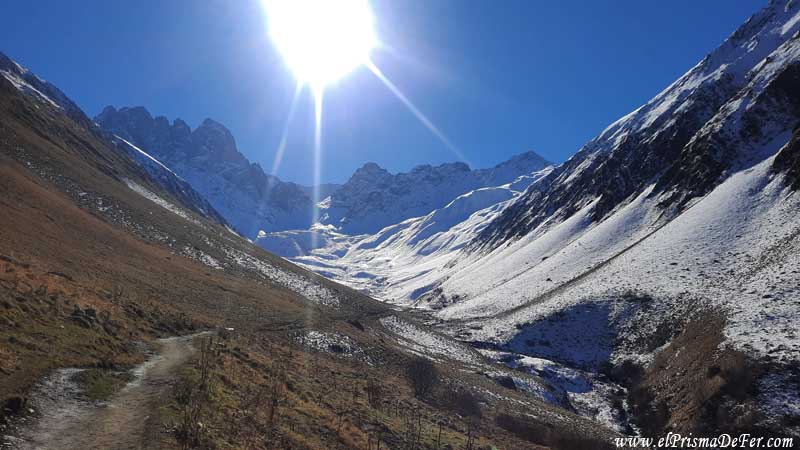
Along one section of the trail, a fork appears next to the river. While it's possible to continue without crossing it, it's best to do so at this point, as there are stones placed there to make it easier to cross without getting your feet wet. This way, the path leads directly to the lake, one of the most recognizable spots in the area.
Chaukhi Lake
Shortly after, you reach Chaukhi Lake, a small lake that when we went, we found half frozen and surrounded by snow. Although many hikers tend to take it as the end of their trek because it's accessible and panoramic, for me it's not the place with the best views of the valley.
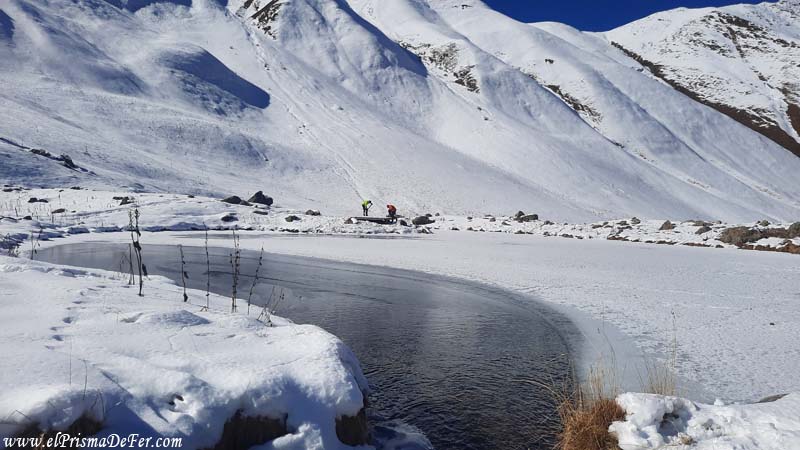
A base camp is often set up in the surrounding area, used by climbers in the Chaukhi mountains, so if you're someone who enjoys this activity, this will be the place for you.
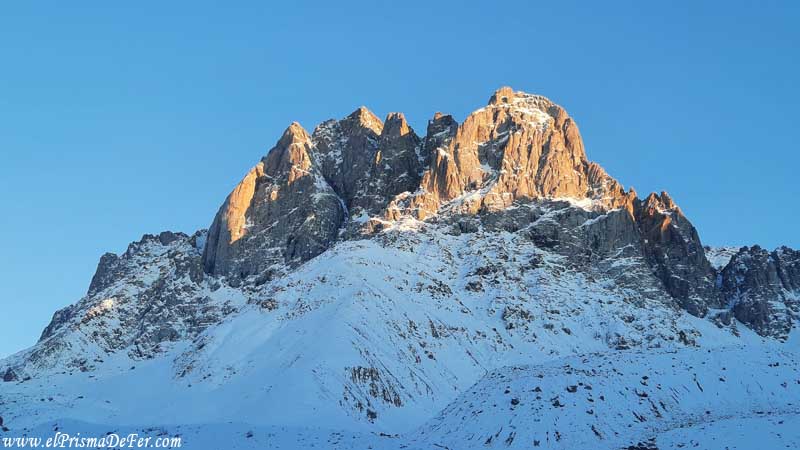
We, however, decided to continue on toward the Chaukhi Pass. The trail became increasingly challenging, with accumulated snow making the climb difficult but also adding an epic feel to the experience.
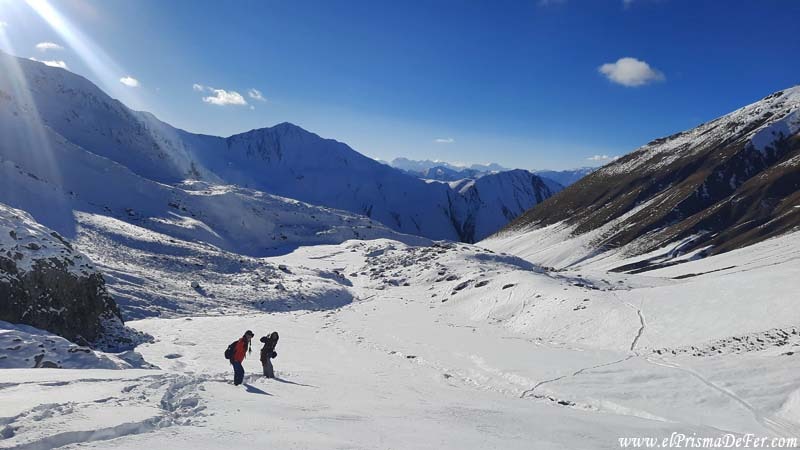
Chaukhi Pass
The final stretch leads to the Chaukhi Pass, the highest point of the route. However, due to the heavy snow and the lack of proper clothing for hiking in such conditions, progress was very difficult.
We had to abandon the climb just a few meters before the summit, but from there we were able to enjoy what were undoubtedly the best views of the day over the valley and the mountains of the massif, with the snow-capped peaks framing the horizon.
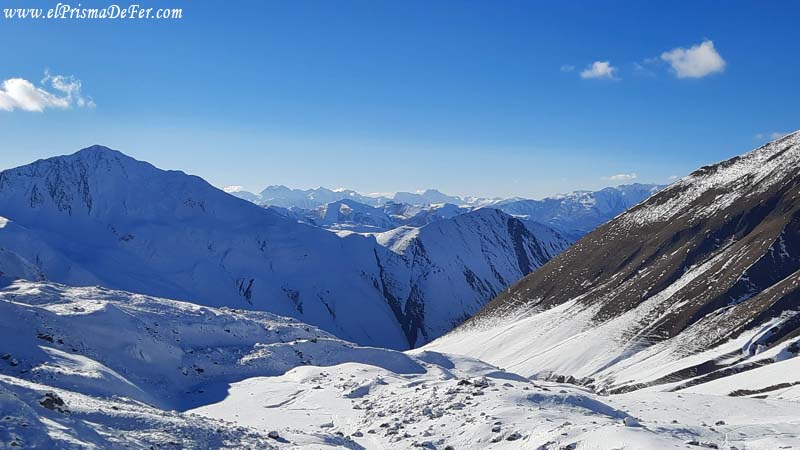
Even so, I confess that the walk was exhausting, not only because of the slippery, snow-covered terrain, but also because of the intense cold we felt.
With wet feet and some of our clothing from walking in the snow, and without proper clothing for the conditions, each step became heavier and more demanding, making the experience both a physical and mental challenge.
Return to Juta
From the Chaukhi Pass, there is no other option but to return along the same path to the village of Juta. The descent is usually faster than the ascent, but it still requires caution due to slippery sections and accumulated snow. Under normal conditions, the return trip can take between 3 and 4 hours, depending on the pace and the stops made to rest or enjoy the scenery.
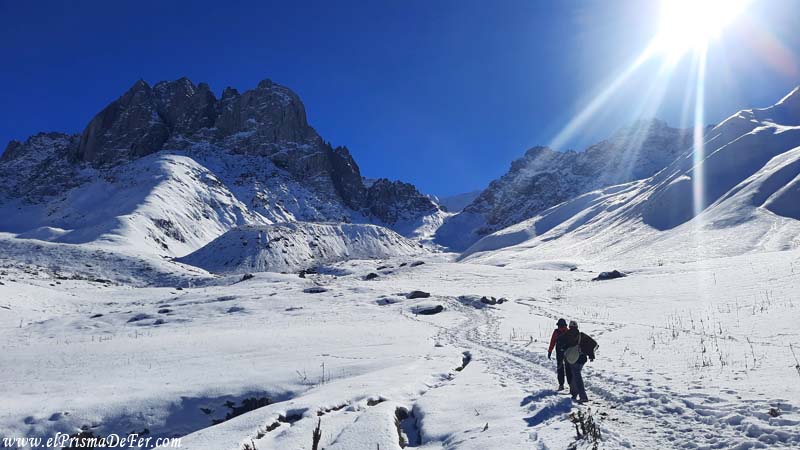
How to get back to Kazbegi from the Juta Valley
From the village of Juta, there is no direct public transportation, so the most common option is to arrange a taxi ride back to Stepantsminda. Many travelers arrange to have the same driver pick them up at a predetermined time, which is convenient and avoids getting stuck.
Another alternative is hitchhiking, which is quite common in the area and usually works quickly, as many locals and tourists travel that route.
During high season, shared transfers are also organized, especially from Camp Zeta, where several travelers group together to share the costs.

Best time to visit the Juta Valley
The best time to explore the Juta Valley is between June and early September, when the trails are clear of snow, the rivers and streams have a steady flow, and the days are long enough to make the most of your hike.
I did the trek at the end of October, and there was already quite a bit of snow, especially from Chaukhi Lake onwards. This made the entire stretch to the mountain pass more difficult and time-consuming, but at the same time, it gave the landscape an epic feel, with the peaks covered in white.
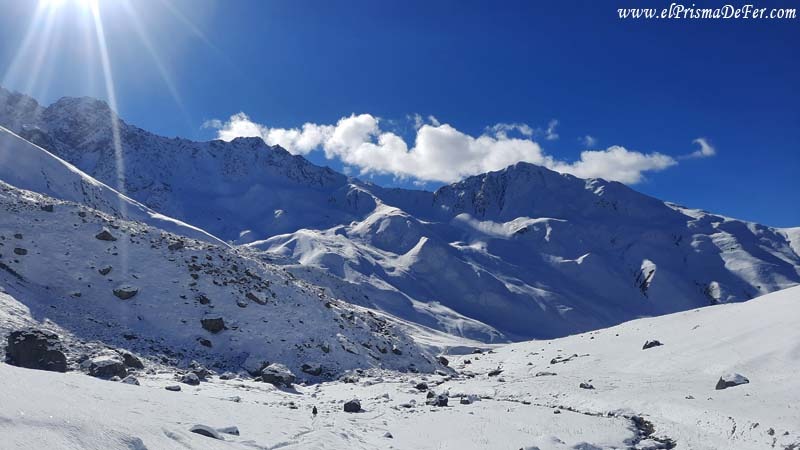
However, for those who prefer easier conditions and clearly visible trails, the summer season remains the best option.
Between Juta Valley and Truso Valley, which one to choose?
If I had to choose between the Juta Valley and the Truso Valley, I would definitely choose Truso. The variety of features found along the route, from villages and ruins to rivers, lakes, and mineral formations, makes each section of the trail interesting and different.
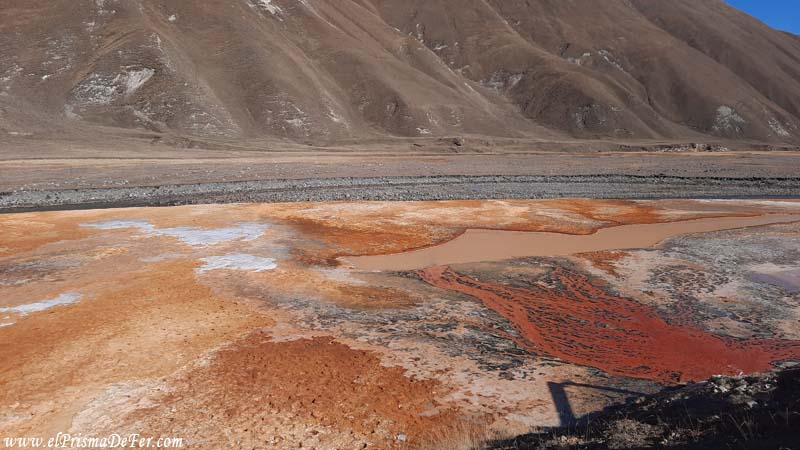
Furthermore, the vastness of the landscape and the feeling of being surrounded by the Caucasus give it an advantage that Juta, with its more closed mountain trail, does not offer.
I found the overall experience in Truso more complete and varied. While Juta also has its charm, I found the hike less impressive and more exhausting due to the snow and cold. Truso combines expansive landscapes, historical sites, and strategic stops that enrich the day.
For all these reasons, for those looking for a more visual and dynamic trek in Kazbegi, Truso would be my recommendation.
Recommendations for visiting the Juta Valley
If you're planning to do this trek in a day, it's best to arrive early. Due to the altitude and terrain conditions, it's important to bring clothing suitable for the cold and snow if you're going in the fall or winter, including waterproof footwear and trekking poles for added stability. Keep in mind that crossing the river requires caution, although there are stones to make the crossing easier.
Although the route is feasible in one day, it's a good idea to leave early to take advantage of the light and enjoy the journey without rushing.
Regarding food and water, there aren't many options along the way beyond the village of Juta and the Five Seasons Hotel, so bringing snacks and water is recommended.
My reflections on trekking to the Juta Valley
Of all the treks I did in Georgia, I have to say that the Juta Valley was the one I was least excited about. The views, while beautiful, didn't seem as epic as those found in other regions of the country, like Svaneti or Kazbegi.
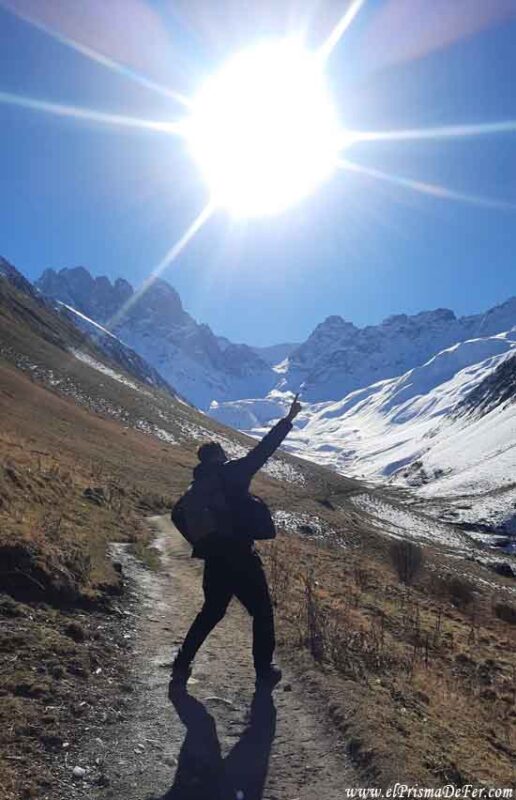
Furthermore, the conditions I experienced, the large amount of snow and the intense cold, made the hike quite exhausting, taking away some of the enjoyment from the journey.
Perhaps in summer, with the greener landscape and the stronger rivers, the surroundings become even more enjoyable, and the experience of walking through Juta Valley gains in charm and comfort.

